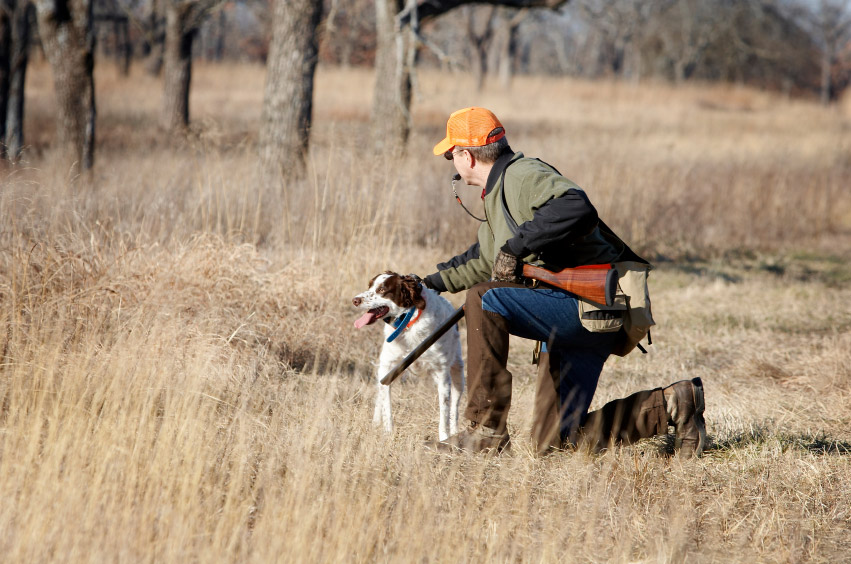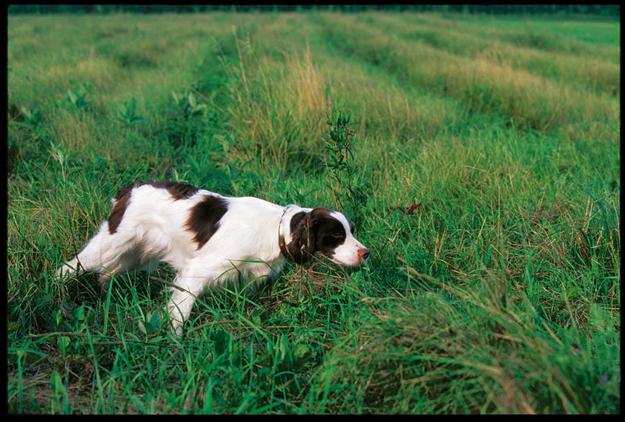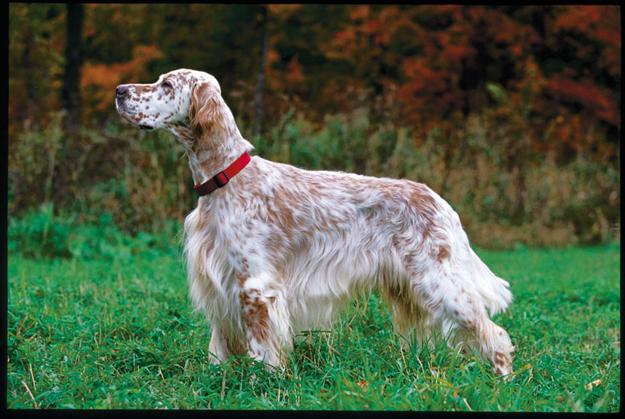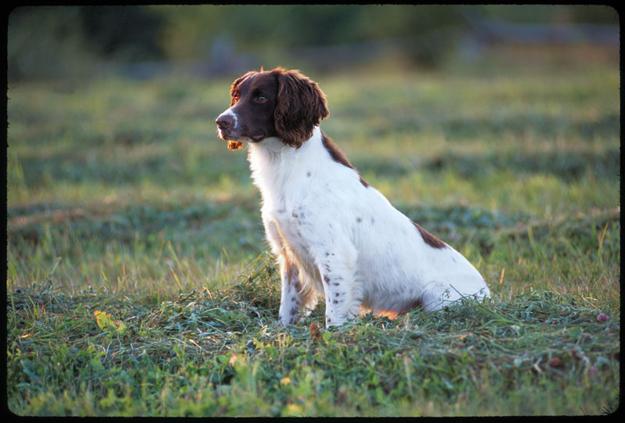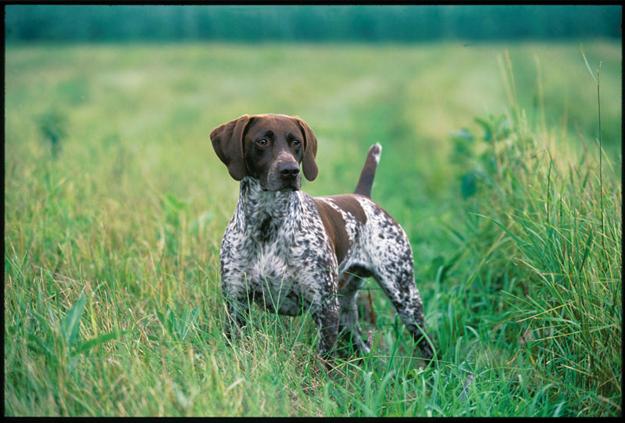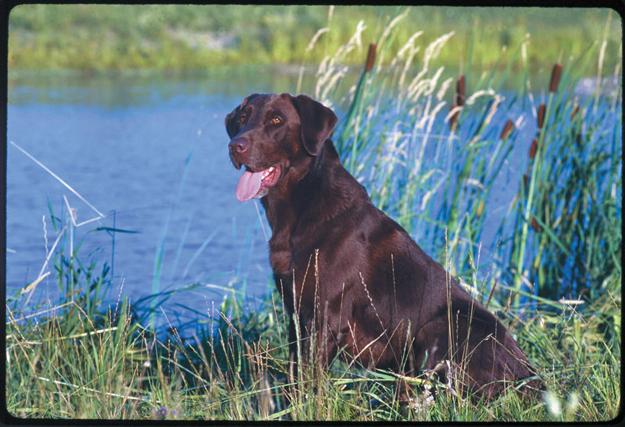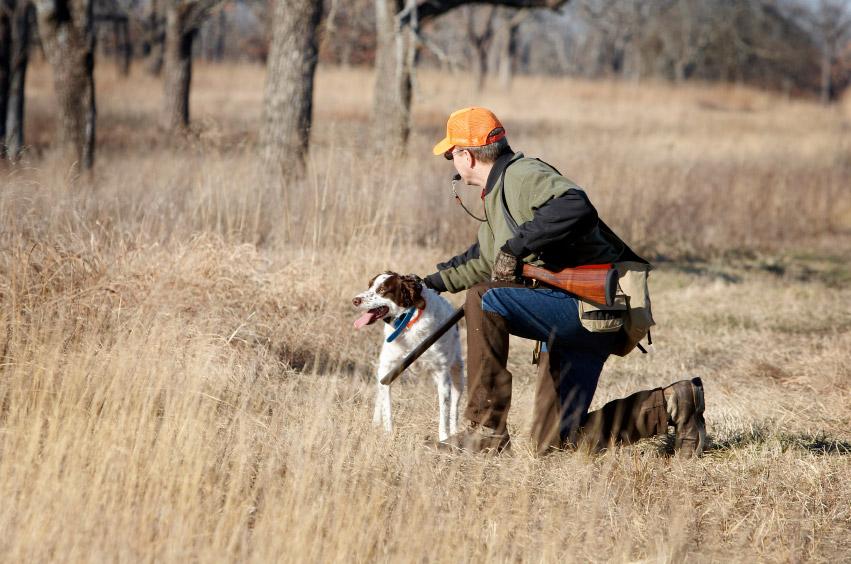Advertisement
Brittany
Average Size: 17 to 21 inches long, 35 to 50 pounds
Coat: Medium-length hair, prone to collecting burrs
Health Issues: Occasional canine hip dysplasia
For More Info: Brittany Spaniel Club of Canada
Advertisement
History & Facts
Originally called upon to hunt both birds and bunnies, Brittanys have a lengthy job description: pointing, trailing wounded game and retrieving from both land and water. While members of the Versatile Dog Association strive to maintain all of these skills, most Brittany owners primarily focus on the pointing and retrieving of feathered game.
Formerly called Brittany spaniels, these little guys were first developed in the French province of Brittany. While the majority are orange and white, there are a few liver-and-white-coloured Brittanys, as well as a European strain called the French Brittany that’s black and white or black, brown and white. They hunt all of Canada’s upland birds, especially ruffed grouse and woodcock in the East, and Hungarian partridge, pheasants and sharp-tailed grouse in the West.
Discussions about pointing dogs eventually come around to the topic of range, which is how far from the handler the dog goes to find birds. Brittanys vary considerably, but the good ones are adaptable and stay within 100 yards or so in thick grouse or woodcock forest, yet work out to several hundred yards in open country.
Advertisement
Brittanys are often described as having a soft temperament, meaning the best way to communicate with them is through repetition and gentle correction rather than with a two-by-four and an electric collar. This is generally true, but there are exceptions to everything.
At some point in their early history, Brittanys picked up the nickname “poacher’s dogs” because their small size allowed them to be hidden beneath a poacher’s big coat. I think it was also because they don’t really look like hunting dogs. While the hard, all-business posture and profile of English pointers and German shorthairs make them the Arnold Schwarzeneggers of the dog world, Brittanys look more like Bozo the Clown.
It’s no longer part of their formal name, but Brittanys are still spaniels—and they don’t try to deny it. This means many things, but mainly that they’ve never caught onto the idea that they’re not people. They’re friendly almost to a fault. They’ll sleep on their owners’ beds, shamelessly beg food from the table, then hunt like demons in the field. For the owner, it’s an addictive combination. A case in point is my friend Dave, who tends to get carried away with such things. He started with one Brit about six years ago and now has eight.
English Setter
Average Size: 23 to 27 inches long, 40 to 70 pounds
Coat: Medium to long hair, prone to collecting burrs
Health Issues: Occasional canine hip dysplasia; false pregnancies
For More Info: English Setter Club of Canada
History & Facts
English setters represent the aristocracy of the pointing breeds. Their place in history is guaranteed by the frequency with which they appear as subjects in sporting art and calendars. The breed was refined in England in the early 1800s, but today’s dogs carry traces of Spanish and French pointer blood from as far back as the 1500s.
Like Brittanys, setters can find and point all upland birds. Their first calling, though, is to the grouse woods and woodcock swamps of the East, where their reputation has been polished by revered outdoor writers such as the late George Bird Evans. Today, you’ll still find setters nobly standing woodcock in the alder runs of Quebec and New Brunswick, but you’ll also see them as distant white streaks flying low across western wheat stubble in search of Hungarian partridge.
English setters can be nearly all white, nearly all black, tricolour and all combinations in between. There are large, close-working Ryman strains that weigh up to 70 pounds, as well as 40-pound field-trial speedsters that run for-and reach-the horizon. With setters, there’s a definite distinction between field breeding and show breeding, so if you’re getting one to hunt, consider only those that are bred to do so.
There’s no denying the English setter’s elegant beauty, with its wavy coat and long, feathered tail held high. Take a setter and almost any other dog for a walk in the park and the setter will get all the attention from passersby. Loyal and affectionate, they’re also aware of their good looks and aren’t afraid to flaunt them.
Best of all, English setters are dedicated hunters. A friend was driving near the edge of Calgary once when he glanced over and saw a white setter standing on point in a big field of weeds. This wasn’t unusual, for people often run dogs there, but he thought it odd that there was no human in sight. Forty-five minutes later, when he drove past the same place again, the dog was still on point, still holding the birds-for somebody, for anybody. This time my friend parked the car, walked over and flushed the partridge so the dog could get on with his life. Now that’s dedication in a dog.
Springer Spaniel
Average Size: 18 to 21 inches long, 40 to 55 pounds
Coat: Medium-length hair, prone to collecting burrs
Health Issues: Occasional canine hip dysplasia; very rare occurrences of rage syndrome, a type of treatable epilepsy
For More Info: Canadian National Spaniel Field Trial Association
History & Facts
Springers and pheasants seem to have been made for each other, though the pheasants probably aren’t pleased about it. The dog of choice for many serious pheasant hunters, they’re also the leading breed in the flushing-dog category.
Springers share the Brittany’s happy spaniel personality, and hunt with fierce and unwavering determination. Pheasants don’t like springers because springers don’t give up. They get deep into the grass, using the same travel paths as the birds, and pursue hot scent relentlessly, even in the most rugged cover. A wise old rooster can make a monkey of a tentative pointing dog, but a springer is going to get him up.
Springers are also effective on ruffed grouse and woodcock. They can be used for western prairie birds, too, but by necessity they must hunt within gun range, which is somewhat of a disadvantage in the big open fields of the West. And because they love water and are excellent retrievers, springers make fine waterfowl dogs until the weather and water get too cold.
These dogs were first used in North America in the 1700s, but their heritage traces back to the Renaissance era in Europe. Most springers are liver-and-white-coloured; some are black and white. As with English setters, there are show dogs and field dogs, and the same advice applies. Late in the season, pheasants sometimes gather in tall, dense cattail marshes, and it takes a special dog like a springer to get them into the air. One such dog I knew was named Gus, a tough and determined springer with a creative approach to hunting cattails. He was constantly out of sight as he crashed and bashed his way through the thick cover, so the human hunters’ job was to stand still and listen for the rattling noise that told them where he was. When Gus discovered hot scent he would bark, which was a practical, if somewhat unconventional, development. We quickly learned that this announcement meant, “I don’t know where you guys are, but you better get over here, ’cause a bird’s coming up.”
And talk about giving it their all. Last year, my friend Paul’s 10-year-old springer died of a heart attack while hunting pheasants. When Paul found him deep in a willow patch, the dog had his head resting on his outstretched front legs. He had collapsed in full flight, in mid-stride, doing precisely what he was born to do. We should be so fortunate.
German Shorthaired Pointer
Average Size: 21 to 25 inches long, 45 to 70 pounds
Coat: Short hair
Health Issues: No chronic problems
For More Info: German Shorthair Pointer Club of Canada
History & Facts
Perhaps the most consistent breed of pointing dog is the German shorthaired pointer. They were developed in Germany in the 19th century, with strong influence from older Spanish and English pointers. While the English tended to develop breeds to perform specific tasks, the Germans focused on versatility, a trait that just may have reached its zenith in the German shorthair. These dogs are expected to be good at many tasks-pointing, tracking, retrieving from land and water-and they are.
Shorthairs are usually liver-and-white-coloured, with plenty of ticking. Their size varies somewhat, and their range varies a great deal. Some breeders produce dogs that stay close to the gun, which are ideal for hunting forest birds or pheasants in dense cover. Other breeders produce smaller, faster dogs with the legs, lungs and stamina to hunt the prairie and compete in western field trials.
German shorthairs are not generally hard-headed, but they do respond best to clear, direct communication and correction. One of their best traits is the fact that they don’t hold grudges. We all make mistakes in our training, and some of these are easier to overcome if the dog happens to be a shorthair. For this reason, experts often recommend them to people looking for their first bird dog.
One of the best shorthairs I’ve known belonged to a business partner. The dog’s name was Luke, and he knew the drill. I admired the way he would carefully handle ruffed grouse in thick forest in the morning, then shift into overdrive when hunting Huns in big coulees and stubble fields in the afternoon.
Then there’s Maggie, a German shorthair belonging to Alberta musician Amos Garrett. She’s a close, careful worker, and I’ve noticed no bad qualities, other than she once showed up my big-running Brittanys on a pheasant hunt. It was late in the season and the birds were in heavy brush along a river bottom. My dogs found birds, but they always found the ones several hundred yards away, which invariably snuck off before we could get near them. Maggie, however, found birds closer to us. She found them, pointed them and held them so we could then demonstrate our incompetence with the guns. While we were annoyed by our poor shooting, it didn’t seem to bother Maggie much. But then, she’s a shorthair. She doesn’t know how to hold a grudge.
Labrador Retriever
Average Size: 21 to 24 inches long, 55 to 80 pounds
Coat: Short, dense hair
Health Issues: Occasional canine hip dysplasia
For More Info: Labrador Retriever Club of Canada
History & Facts
The numbers don’t lie. According to both the American and Canadian Kennel Clubs, Labrador retrievers are the most popular purebred dogs in North America. The fact that they’re bright, affectionate and family-friendly has helped them achieve this status-and cross over from the exclusive world of the working dog into the mainstream. Often, Labradors are also chosen as guide dogs for the blind, and as drug-sniffing dogs for the police. While this is all good, for hunters, the better news is that the Lab’s widespread fame hasn’t hurt its ability to hunt. In October, just head to Manitoba’s Delta Marsh-that sacred shrine to waterfowling, where serious duck hunters have gathered since the 1930s-and you’ll find a wet Labrador in the back of nearly every vehicle.
The Lab’s roots trace back to Newfoundland in the 1700s, where they were developed from the St. John’s dogs that retrieved nets for East Coast fishermen. Today, there are black, yellow and chocolate-coloured Labs.
Not surprisingly, these dogs love water and, of course, are specialists in retrieving. But they also make good upland flushing dogs in small pieces of heavy cover. Many pheasant hunters in the irrigation country of southern Alberta and Saskatchewan choose Labs because they have the determination and strength to root pheasants out of the densest willow or cattail cover. And if you happen to drop a bird in an irrigation canal, Mr. Lab will be happy to take care of that for you, too.
Throughout their history, there have always been some Labradors that possessed the instinct to point, and in the last 20 years, a few breeders have selectively intensified this trait. There are now both standard Labs and pointing Labs available from reputable kennels.
If you like to witness the birth of an autumn morning from the comfort of a duck blind-soaking it up with your eyes, ears and nose-you won’t find a better companion than a Labrador retriever. He’ll gather your ducks, even those that fall far out, and he’ll forgive you your misses. He’ll also teach you something, if you let him. The next time you’re sharing a blind with a Lab and you hear the ducks coming from far away, take your attention off the sky for a moment and look into the dog’s face as he watches for the birds. Everything you’ll ever need to know about passion will be laid bare in those gleaming brown eyes.
Hunter’s Best Friends
A hunting dog is not a tool. A hunting dog is a backstage pass to the wild world. Hanging around with a good bird dog is a privileged part of the outdoor life, and different hunters choose different breeds for different reasons. Some people intentionally reject the mainstream and go with lesser-known breeds, but in Canada, the dogs you most often find working in the field for their human hunting buddies are Brittanys, English setters, English springer spaniels, German shorthaired pointers and Labrador retrievers. These breeds have stood the test of time for Canadian hunters in Canadian conditions. Here’s why.

